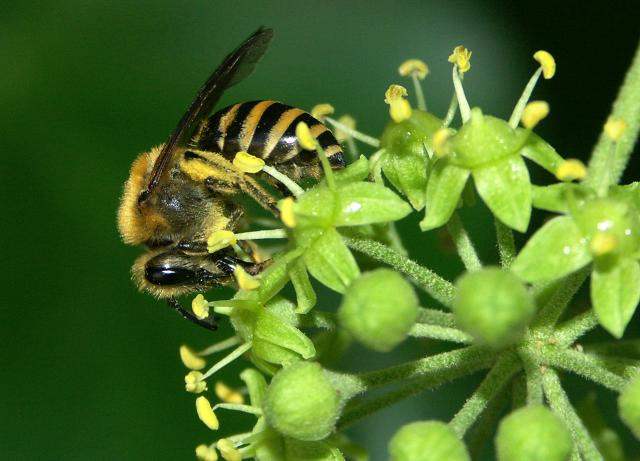- Urbanbees project
- Learn about bees
- Participate
- Download
- Contact
Getting to know bees
Bees are extremely diversified creatures as there are almost 1000 species in France and 2 500 species in Europe. The honey bee, also known as the domestic bee, is just one of these species. Each species has very different requirements : there are generalist and specialist species.
 A majority of plants and flowers depend on animals, insects in particular, to transport pollen grains from stamen to stigmas, and thereby allowing their reproduction.
A majority of plants and flowers depend on animals, insects in particular, to transport pollen grains from stamen to stigmas, and thereby allowing their reproduction.
The decline of these pollinating insects was confirmed during the convention on biological biodiversity in 2006: both domestic and wild bees have been stricken by this phenomenon.
The domestic bee plays an important role in pollinisation, yet wild bees contribute equally to the delicate and essential operation of the reproduction of most flowering plants.
If this project's focus is wild bees, it is because they play the role of umbrella species, plant and animal biodiversity will also benefit from their conservation. The diversity of wild flora depends greatly on passing bees. But this flora supplies food and reproduction sites for many other species (butterflies, flies, beetles...). Once these species come back, it will be their predators (birds, lizards, amphibians...) who will find more abundant and less-polluted food.


